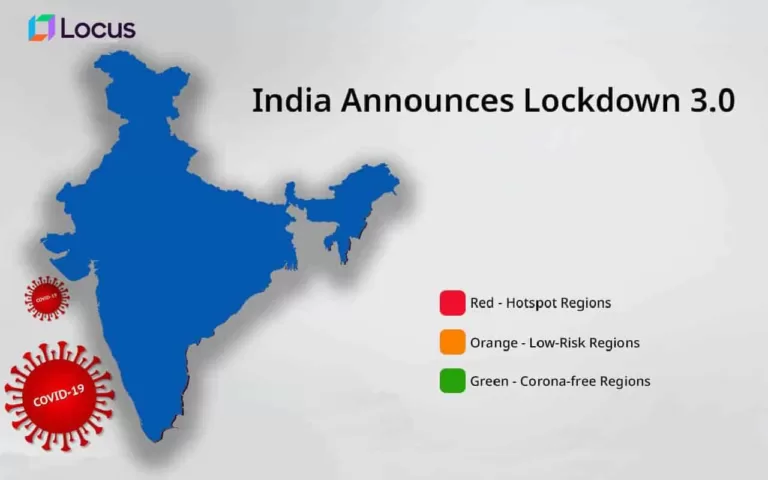Delivery Experience, Grocery, Route Optimization, Supply Chain Optimization
Refrigerated Logistics becomes a mainstay in Grocery deliveries
May 6, 2020
5 mins read

In the next ten years, 70% of American consumers will regularly do grocery shopping online. – Food Marketing Institute.
The sudden growth of online grocery sales has led to increased demand for cold-storage products.
A challenge that grocers face in refrigerated logistics is that consumers are very picky when it comes to food and consumables. For instance, it is quite difficult for them to gauge how ripe a banana should be for a consumer.
Another challenge is to manage the surging demand.
Given the perishability of items, refrigerated logistics has narrow time windows to deliver the products. Additionally, transporting food from a warehouse or retail outlet to a consumer location has become quite expensive and complicated.
Emerging trends in refrigerated logistics

There is a growing dislike for chemicals and preservatives today. This aversion has led to the increasing demand for cold-storage of products. Refrigeration is a highly effective preservation method that is an alternative to the usage of chemicals.
In the US and across the globe, while refrigerated logistics is still in its infancy, it holds significant potential for the on-demand industry.
Only 3% of grocery spending occurs online compared to 20% for footwear and 40% for electronics. By 2022, this figure is expected to rise to 13%- Research from Bain & Co and Google.
Refrigerated logistics has generated some new trends in the online grocery industry.
Increasing demand for cold storage warehousing space
The US witnessed a sudden increase in demand for meal kits delivery and E-grocery last year. This sudden spike in demand is expected to increase the cold-storage space.
Increased demand for perishable food products and groceries in recent years will lead to a rise in demand of 100 million square feet of additional cold-storage spaces over the next five years.- CBRE report, US
Most logistics experts are of the opinion that these specialized cold-storage facilities demand significant power, capital, and resources.
The cost of building cold-storage facilities ranges between $250-$350 per square foot. It is three to four times expensive than traditional warehouses.- JLL research on Cold Storage, 2018
Urban consumers likely to be benefited
The majority of the demand that is generated for E-groceries and perishables will come from food-producing states where there is a food supply chain in place. CBRE reports mention that states like California, Florida, Texas, Wisconsin, Washington will generate one part of this bulk demand.
Consumers from major cities like Los Angeles, Seattle, and Austin will meet the other part of the bulk demand, according to the CBRE report.
Micro-fulfillment centers
Micro-fulfillment centers are small and compact warehouses located in dense urban areas that are close to consumers. They rely mostly on robotics and artificial intelligence to cater to orders efficiently.
Micro-fulfillment centers can handle a significant portion of the fulfillment process, thereby reducing the time required to process the orders.
BOPIS – Buy Online and Pick-up In-Store
Buy Online and Pick-up In-Store (BOPIS) is a solution that refrigerated logistics providers are working on so as to provide a frictionless shopping experience to their consumers. It enables consumers to make purchases online and receive them in stores.
BOPIS has turned out to be a boon for refrigerated logistics because it eliminates the hassles involved in the last-mile grocery delivery.
Why is last-mile technology essential for refrigerated logistics to deliver more online groceries?

Managing refrigerated logistics with traditional fleets is an uphill task. Preparedness is the most crucial prerequisite for last-mile delivery in refrigerated logistics. Here’s how last-mile technology can help:
Making on-time deliveries
Consumers are willing to pay more for a quick delivery and hence on-time delivery is an essential metric that refrigerated logistics providers are striving to meet.
Failure to meet on-time delivery windows attracts high costs on returns and replacement. Reverse logistics cost is higher for perishables and groceries when compared to non-perishables.
Imagine you are supposed to deliver groceries within an hour. What happens if the delivery fleet breaks down on the way? You need to have a backup plan to complete deliveries, even if one vehicle fails. This backup plan requires software that can help you assign drivers and vehicles based on skill sets and vehicle capacity.
A dynamic route optimization software comes into play here. It helps you to efficiently allocate routes based on delivery time windows, vehicle capacity, and driver skill set. Even if you have multiple on-demand deliveries, it flexibly and automatically alters your route plans.
Real-time monitoring of delivery fleets
Tracking technology is essential for products that require temperature control. Using real-time fleet tracking software provides essential performance metrics. These metrics help in improving your refrigerated deliveries.
Real-time tracking also helps you match customer expectations. Consumers demand accurate live updates, especially when they order groceries or perishables. With real-time tracking you can send timely alerts or messages.
Delivering products in the first attempt
It is extremely important for cold-chain logistics to deliver in the first attempt.
If a delivery is delayed or unsuccessful, the logistics system should be able to route other trucks/riders to enable the delivery.
Conclusion
Refrigerated logistics is steadily gaining trust among customers. The current COVID-19 situation has increased grocery deliveries worldwide, which means that refrigerated deliveries are now more important than ever.
Locus’ Dispatcher software helps delivery companies assign deliveries based on driver skills and vehicle capacity. It automatically re-routes deliveries in times of unexpected breakdowns or failed deliveries.

Related Tags:

News
E-commerce Deliveries Resume in Green and Orange Zones
Ecommerce deliveries resume non-essentials in Green & Orange Zones. Check how efficient zone-based route planning for last-mile deliveries will be critical.
Read more
Healthcare / Pharmaceutical
Managing the Pharma Supply Chain smoothly amidst the COVID-19 chaos
We’re in the year of a devastating global pandemic that has put the entire mankind at risk. The COVID-19 outbreak has affected over 3.5 million people so far and is continuing to disrupt normal life and economies around the world. Over 100 vaccines are currently under pre-clinical tests, but healthcare experts are still not sure […]
Read moreMOST POPULAR
EDITOR’S PICKS
SUBSCRIBE TO OUR NEWSLETTER
Stay up to date with the latest marketing, sales, and service tips and news


Refrigerated Logistics becomes a mainstay in Grocery deliveries